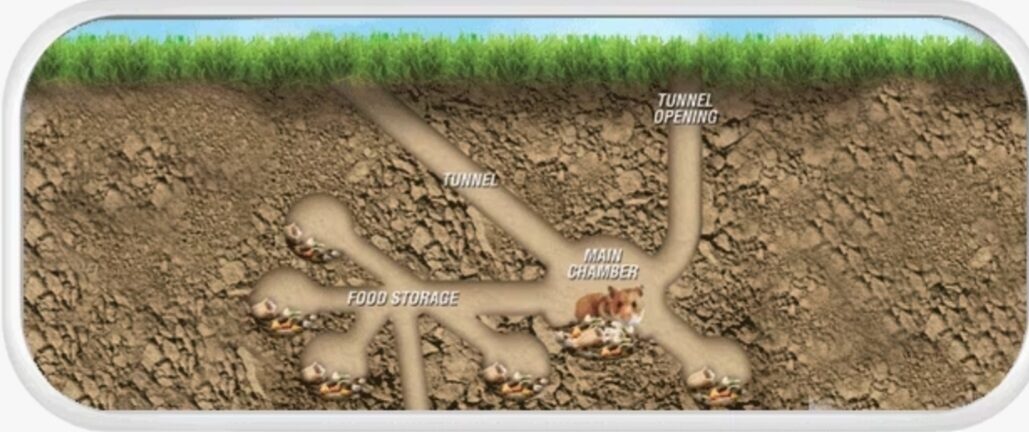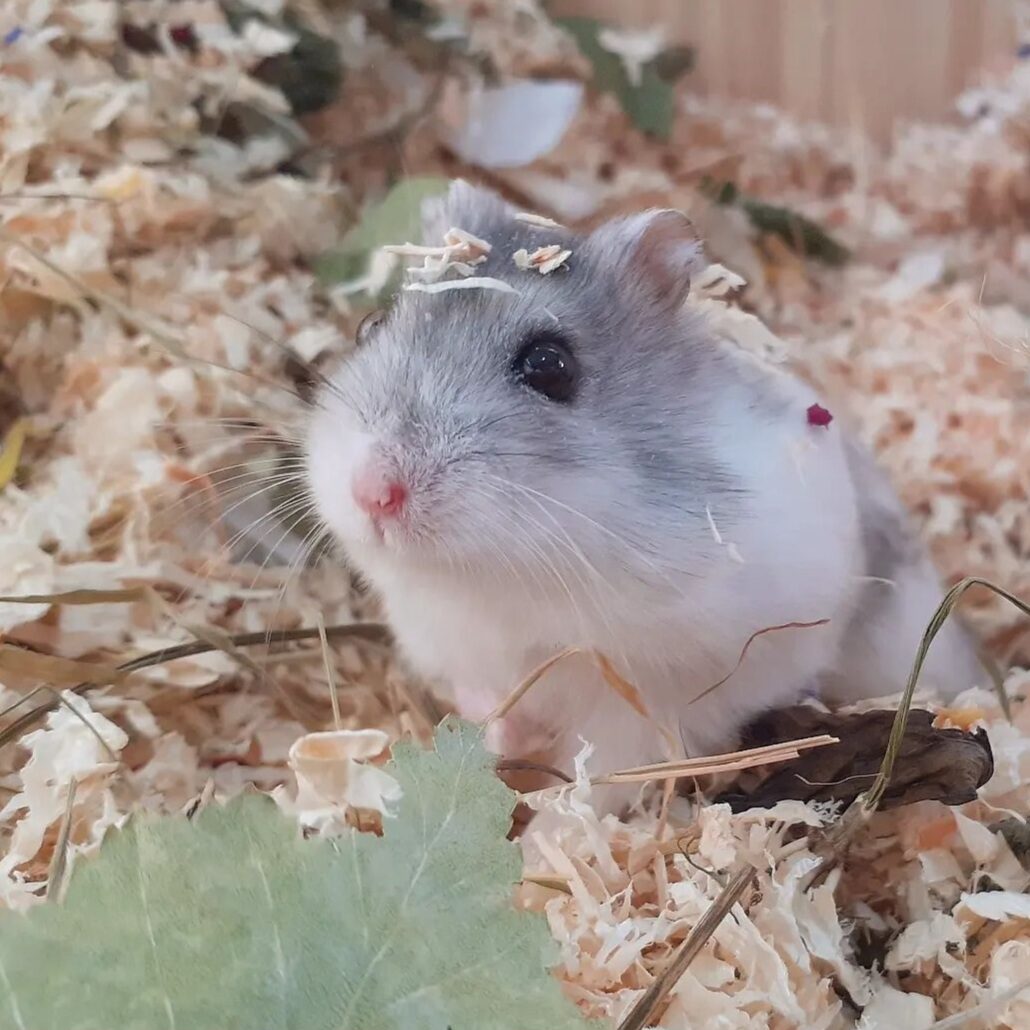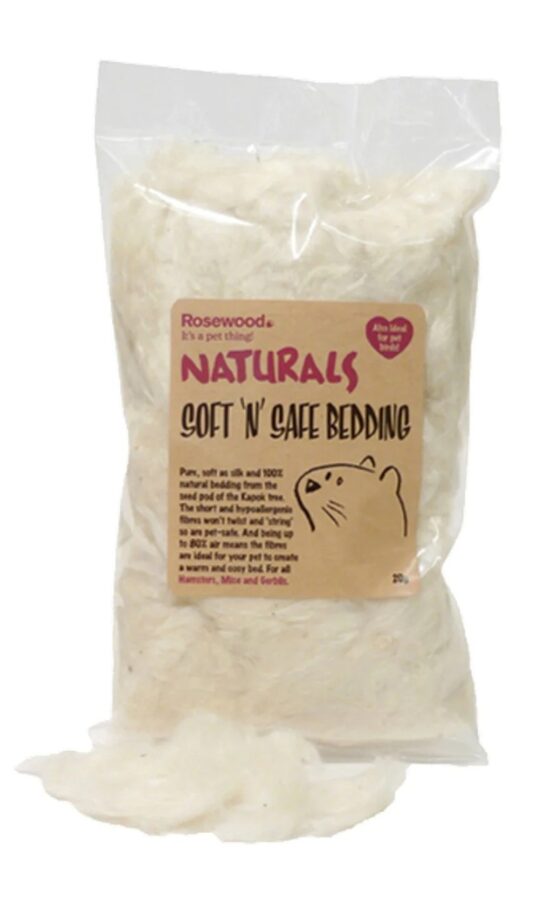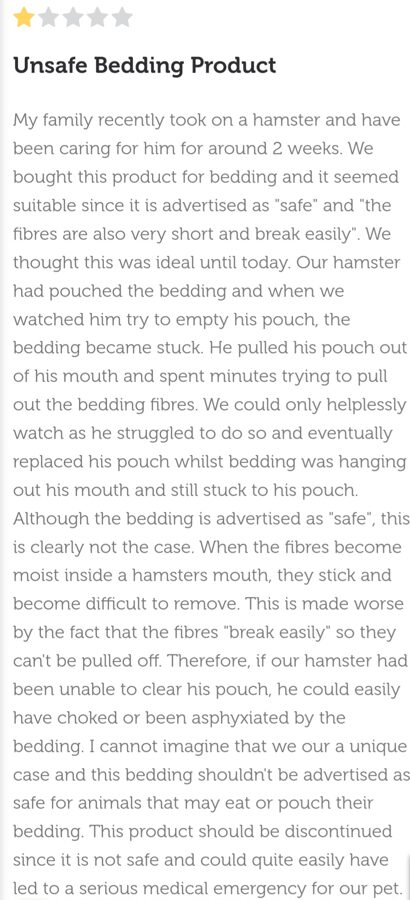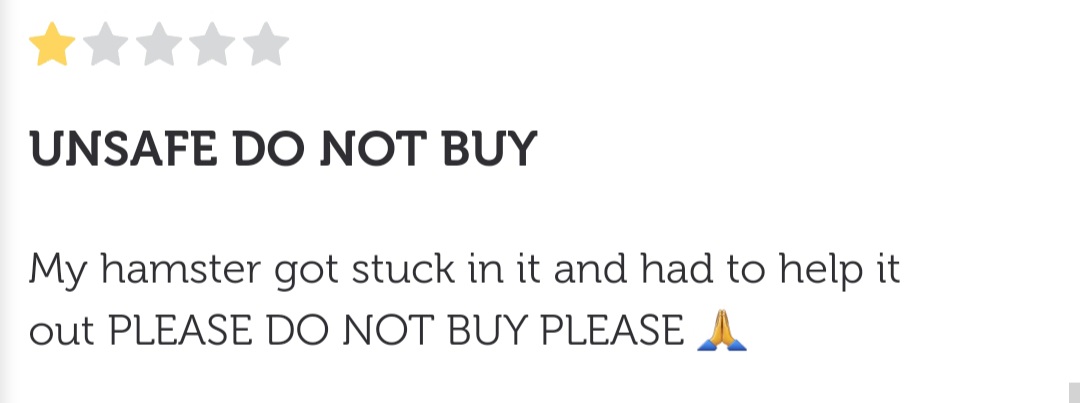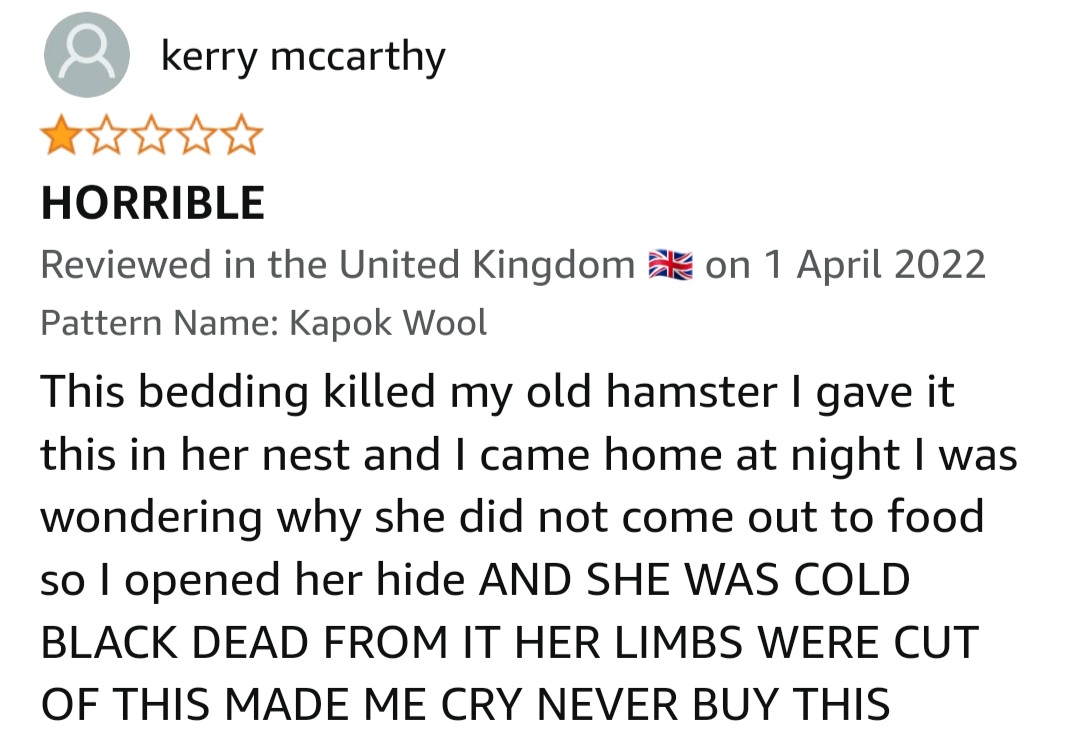Bedding depth
In November 2006, there was a study done where they placed 45 male Syrian hamsters into individual cages, with different bedding depths- either 80cm, 40cm or 10cm. Hamsters kept with 10cm (4 inches) of bedding showed significantly more boredom behaviours (chewing on the wire). All hamsters that were given 40- 80cm (15.7 - 31.5 inches) constructed burrows which they used. In cages with 80cm (31.5 inches) deep bedding, no boredom behaviours were observed. From this, we can see that providing deep bedding enhances the welfare of hamsters. Because it is difficult to find a cage to allow room for 40cm (15.7 inches) of bedding, and if you have a Syrian hamster, a 28cm (11 inch) wheel, 25cm (10 inches) of bedding is the current minimum. However, if your cage allows you to add more bedding, that is highly recommended and will be extremely beneficial for your hamster.
Hamsters have very sensitive respiratory systems, so it's important to choose the correct type of bedding so your hamster won't develop a respiratory infection. Pine and cedar beddings and unsafe, due to the level of phenols and toxic acids released. You should also avoid unlabelled beddings and sawdust, as they are usually pine or cedar. Scented bedding is also dangerous and hamsters can develop respiratory infections from this. It would be like if you, as a human, were stuck inside a small room with someone constantly spraying hairspray or perfume.
Safe bedding types includes- unscented paper bedding, spruce, aspen and hemp
